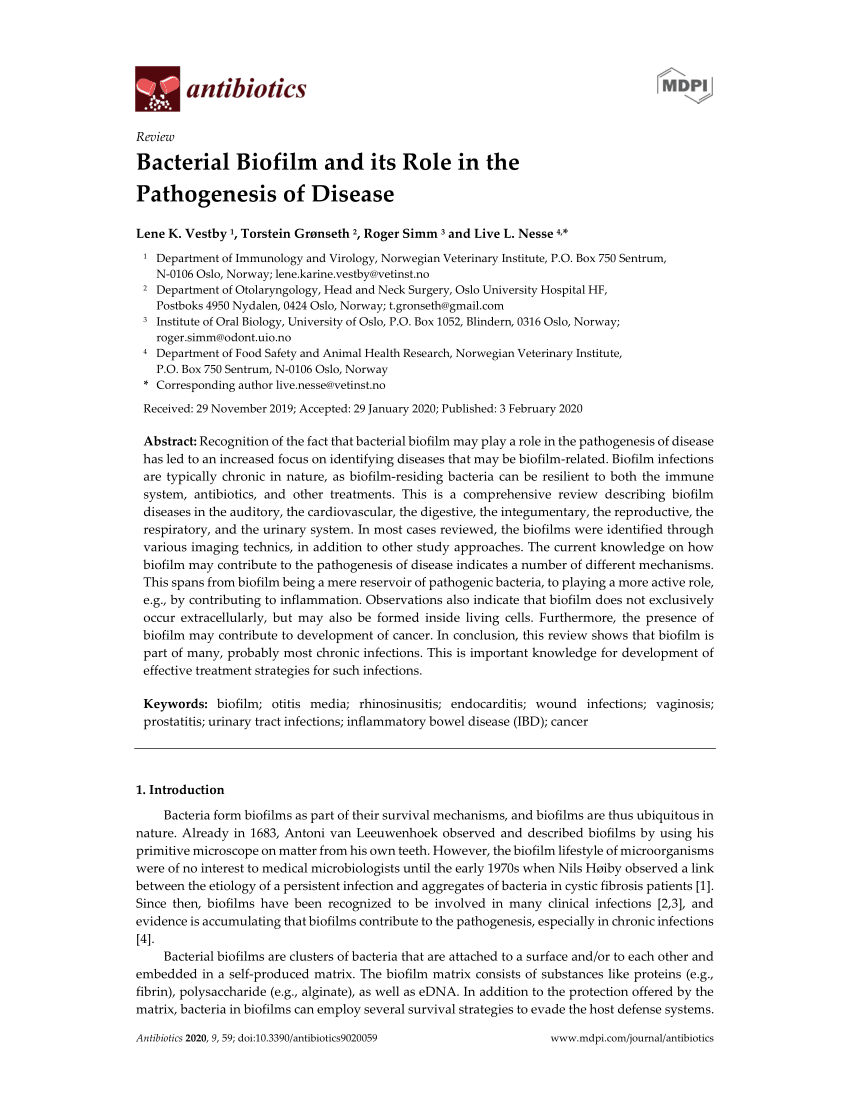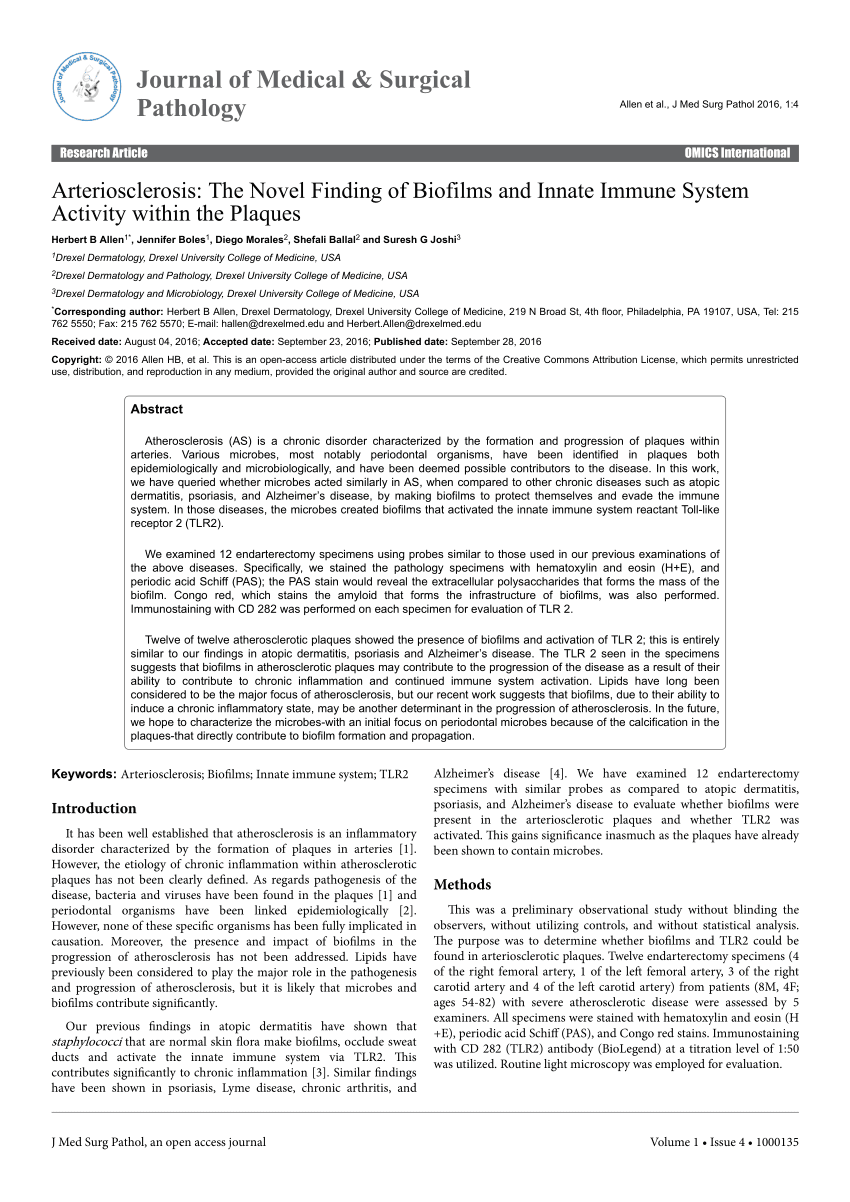
(PDF) Bacterial Biofilm and its Role in the Pathogenesis of Disease
PDF | Recognition of the fact that bacterial biofilm may play a role in the pathogenesis of disease has led to an increased focus on identifying... | Find, read and cite all the research you need on ResearchGate
Abstract
Recognition of the fact that bacterial biofilm may play a role in the pathogenesis of disease has led to an increased focus on identifying diseases that may be biofilm-related. Biofilm infections are typically chronic in nature, as biofilm-residing bacteria can be resilient to both the immune system, antibiotics, and other treatments. This is a comprehensive review describing biofilm diseases in the auditory, the cardiovascular, the digestive, the integumentary, the reproductive, the respiratory, and the urinary system. In most cases reviewed, the biofilms were identified through various imaging technics, in addition to other study approaches. The current knowledge on how biofilm may contribute to the pathogenesis of disease indicates a number of different mechanisms. This spans from biofilm being a mere reservoir of pathogenic bacteria, to playing a more active role, e.g., by contributing to inflammation. Observations also indicate that biofilm does not exclusively occur extracellularly, but may also be formed inside living cells. Furthermore, the presence of biofilm may contribute to development of cancer. In conclusion, this review shows that biofilm is part of many, probably most chronic infections. This is important knowledge for development of effective treatment strategies for such infections.


